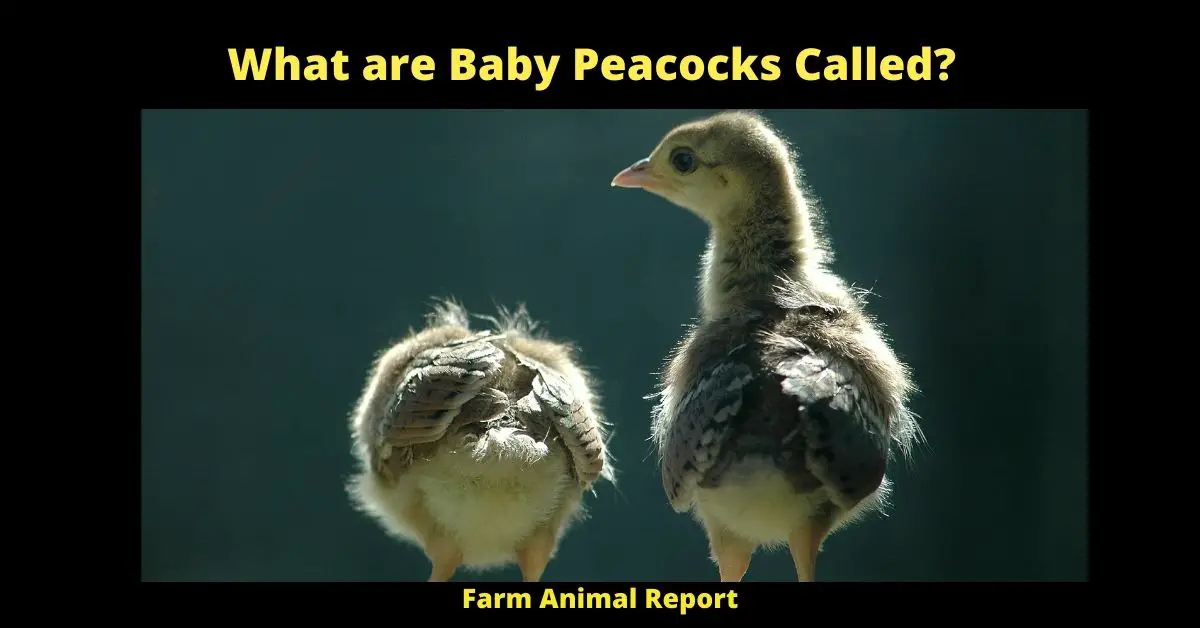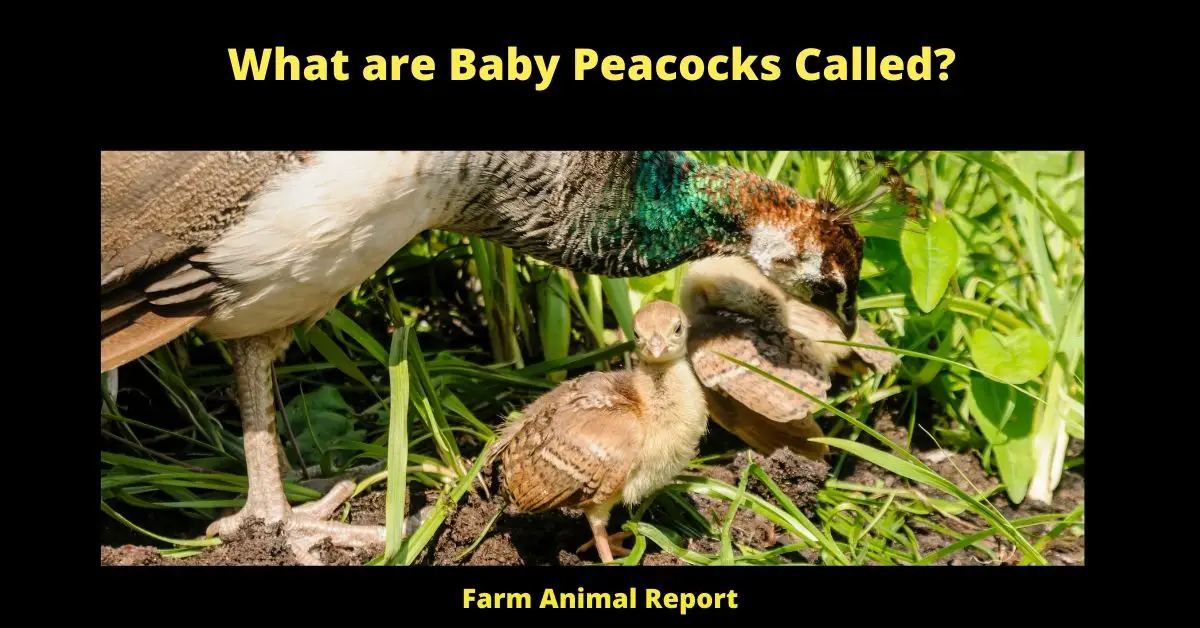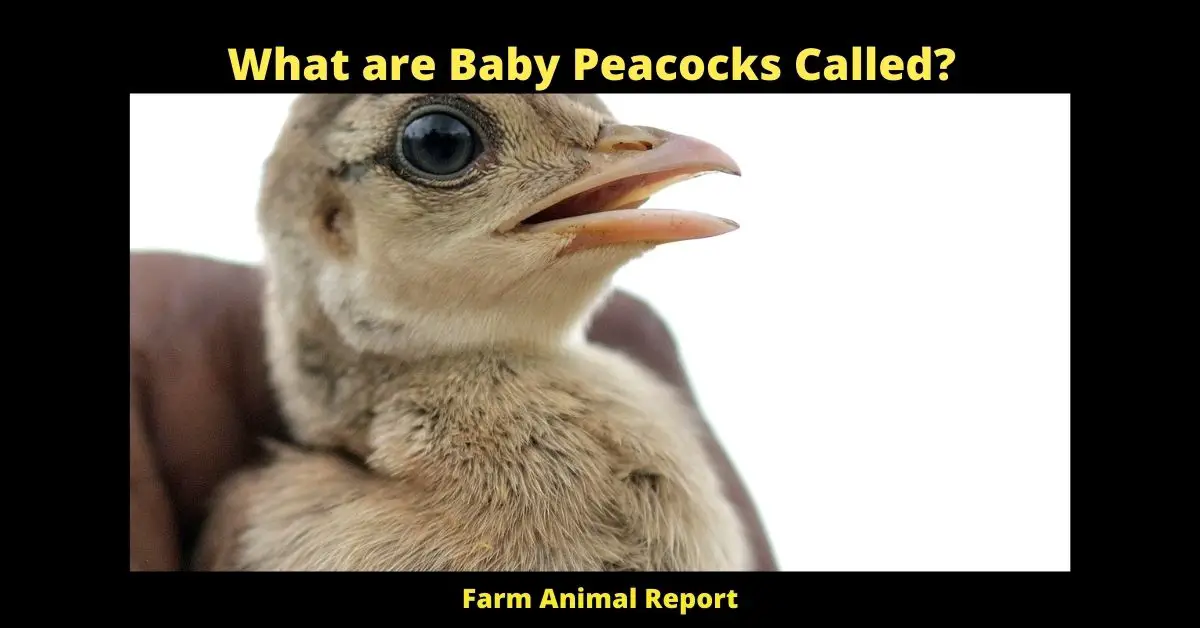Peacock Babys – As general rule Baby peacocks are commonly called peachicks. Peachicks are the chicks of any of the three species of peafowl that exist: the Indian peafowl, the Congo peafowl, and the Green peafowl. Peacocks are technically only male peafowl, even though the term is commonly used to refer to both male and female peafowl (who are called peahens).
What are Peacock Babys Called?
Baby peacocks are commonly called peachicks. Peachicks are the chicks of any of the three species of peafowl that exist: the Indian peafowl, the Congo peafowl, and the Green peafowl. Peacocks are technically only male peafowl, even though the term is commonly used to refer to both male and female peafowl (who are called peahens). What is a Baby Peacock Called? Peacock Babys
What are Baby Peacocks Called? – Every enormous and stunning peafowl began its existence as a fairly little peachick – a baby peacock – before growing into its current size and stature.
This article contains all of the information you might ever want to know about baby peacocks. So continue reading. What are Baby Peacocks Called?
Jump to 10 Ways to Make **MONEY** Peacock Farming
What is the Appearance of a Baby Peacock? (Peafowl)
It is nearly hard to tell the difference between a peacock and a peahen when they are initially born. They are coated in light brown fluffy down and have striped wing feathers that resemble those of a young pheasant, to which peafowl are extremely closely related and to which they are covered in light brown fluffy down.
If You would Like to add to Your Peacock Raising Library Check Out These Great Books on Amazon
Peachicks have the appearance of game birds, and they are highly similar to baby pheasants. They have relatively long legs as well, with males having significantly longer legs than females, which makes them easier to differ from one another.
Some peachicks are born entirely white, like in the case of leucite-produced all-white peafowl.
What is the Size of a Baby Peacock? (Peacock Baby)
Baby peacocks measure around 12cm (4.7in) in length. Even though peafowl is giant birds, peachicks are also relatively large, around the size of a cygnet or a gosling in terms of size.
What is the average Weight of a Baby Peacock?
When they are born, peachicks weigh 103 grams (3.6 ounces). This is a substantial amount of weight, more than double the weight of a duckling and five times the weight of a standard pheasant chick, which weighs around 20g.
What is a group of Peacocks Called?
A group of peacocks is generally referred to as a “party” or a “pride”!
This bird is India’s national bird, and it is protected under the laws of that country. The Peacock is known as a sacred bird in Hinduism because the dots on its tail represent the eyes of the gods, which are represented by the spots on the Peacock’s tail.
Why are Baby Peacocks Born without Feathers?
It is a natural reality that the majority of birds, including peacocks, are born without their whole set of feathers. It is the genetic capability/adaptation of birds that makes them unique and different. But in most of the peacock species, flight feathers are present at the time of birth.
Why Do Chickens and Baby Peacocks Both have Blue Eyes?
Five eye colors are commonly found in chickens that include the following
- Brown
- Gold
- Red
- Black
- Pink (albino)

The blue color of the chicken eye is due to a rare genetic defect.
Similarly, peacocks’ eyes also come in multiple colors. The white Peacock has blue eyes and colored skin. Leucism is a common genetic mutation that results in the lack of pigmentation. Animals/peacocks suffering from leucism keep their usual eye color.
Specifically, it is the feathers that are lacking in coloration. The eyes’ color is determined by which genes are dominant and which are recessive.
The eye color of both chickens and peacocks is mainly controlled by genetics, although other factors such as age, nutrition, and disease can have an impact on eye color.
When do Baby Peacocks Start Walking?
After only a few minutes of hatching, the baby peacock begins to walk. Or we may say that baby peacocks start walking within one hour after their hatching.
What sounds do Baby Peacocks Make?
Baby peacocks usually make scream, squawk, and honk sounds. The sound of a baby peacock is usually similar to the sound of a human baby crying.
Who named the Peacock?
It is not sure who came up with the name “peacock.” However, nearly six hundred years ago, the bird we now know as the Peacock was simply referred to as a po, though by the late nineteenth century, the terms pokok, pocock, and Peacock had begun to gain popularity.
What is the appearance of Peacock Eggs?
Eggs laid by peafowl are typically light brown in color. The eggs of the Indian peafowl are approximately 7.6 to 10cm (3 to 4in) in length and inches wide and 5 to 7.6cm (2 to 3in) in diameter. They range in weight from 100 to 135 grams.
What is the usual number of Eggs laid by a Peacock?
The Indian Peacock can lay as many as 11-12 eggs in one clutch, with a typical minimum of 3. The Green peafowl lays fewer eggs, usually between 3 and 6 per clutch. Similarly, the Congo peafowl lays 4 to 6 eggs.
When are Baby Peacocks able to Fly?
Peacock usually starts flying after the 8th week. Peafowls are capable of flying and do so frequently.
They usually fly for very short distances. Longer flights are used as a last resort for evading predators in certain situations. It is extremely rare for any peafowl to fly more than one mile in the distance.
Peachicks learn to fly relatively fast, with many taking their maiden flight between one and two weeks after birth. The mother usually encourages the peachicks to attempt flight under cover of darkness, often from a perch that is not too high above the ground, in order to avoid injury to the young.

When do Newborn Peacocks leave their Nests?
Peahens are incredibly protective of their peachicks for at least 4 to 6 months after they are born. In order to reach sexual maturity, chicks must first learn how to forage for their own food and undergo a significant amount of growth.
The first few weeks after peachicks begin to leave their mother, they will most likely remain relatively close to her until they find mates of their own and begin to expand their territory.
How long do Newborn Peacocks remain with their parents?
It is believed that both Indian peacocks and Green peacocks are polygamous; however, the Congo peafowl is believed to be a single-parent family. Peacocks, both Indian and Green, do not assist peahens in the construction of nests or the rearing of young, but there is little information available on Congo peafowl.
In the wild, peachicks stay with their parents for around six months; in captivity, they often stay for a shorter time. In fact, when kept in captivity, peahens are known to exhibit poor maternal instincts. As a result, peachicks born in captivity may not be able to remain with their mother for an extended period of time.
What does the Appearance of a Young Peacock look like?
For the first five months of their lives, juvenile peacocks and peahens are challenging to distinguish from one another.
They will retain most of their duller, plain brown plumage, as well as their striped wings and tails, for up to three years until they achieve full maturity. Peachicks begin to develop their crest feathers at the age of 2 to 3 months.
Male adolescents begin to acquire colored chests when they are about five months old. When they are under one year old, young peacocks will have practically none of the eye-catching tail feathers that distinguish adult peacocks from other birds in the sky.
The development of these elaborate tail feathers might take another two years or even longer in some cases. Peahens attain sexual maturity far more quickly than other birds of prey, and by the time they’re one year old, they’ve developed most of their adult plumage.
What do Baby Peacocks Eat? ( Baby Peacock Stock) Baby Peacocks Eat
Peachicks, like fully-fledged peafowl, are non-fussy omnivores who consume a wide and flexible diet that includes both plant materials and meat of various sorts.
Peachicks are omnivores in the wild and are weaned on soft food by their parents until they are ready to swallow larger, more solid foods on their own own.
Peafowls have powerful and sharp beaks that develop quickly – peachicks will be able to forage insects, invertebrates, small animals, amphibians, and lizards within two weeks to a month hatching. Peafowl is excellent foragers and can forage insects, arthropods, small animals, amphibians, and lizards.
A high-protein diet is necessary for the growth of peachicks’ feathers, just as it is for adult peafowl. Peachicks are typically fed high-protein gamebird blends when kept in captivity. Aside from that, they’ll consume a wide variety of vegetables, cereals, oats, fruits, and meat, including insects and mealworms.
Unique Facts about Baby Peacocks
- Baby Peacocks are Called Chicks: Baby peacocks are known as chicks and are usually born from the eggs that their mother has laid. They are usually gray or brown in color and will develop their colorful plumage as they mature.
- Chicks are Born with Spots: Baby peacocks are born with white spots on their feathers, which will later turn into the bright colors and eye-shapes that give them their characteristic look.
- Chicks Take 6 Months to Fledge: Baby peacocks take around 6 months to fully fledge and can begin to fly shortly after.
- Chicks are Very Social: Baby peacocks are very social creatures and will flock together with other chicks and adult peacocks.
- Males May be Larger than Females: Baby peacocks may be a bit larger than their female counterparts, as male peacocks can grow up to double the size of their female counterparts.
- Chicks are Born with Strong Legs: Baby peacocks are born with very strong legs that allow them to walk and hop around shortly after birth.
- Chicks are Born with Beaks: Baby peacocks are born with beaks, which they use to make a range of different calls, as well as to eat.
- Chicks are Born with Fully Grown Tail Feathers: Baby peacocks are born with fully grown tail feathers, which are known as ‘train’. These tail feathers are what give them their characteristic look.
- Chicks Have a Lifespan of 10-20 Years: Baby peacocks can live up to 10-20 years in the wild.
- Chicks are Omnivorous: Baby peacocks are omnivorous, meaning they eat both plants and animals. They typically feed on insects, seeds, berries, and small vertebrates.
Baby peacocks are a beautiful and captivating sight, with their colorful feathers, long tails, and big eyes. But there is much more to these amazing birds than meets the eye. In this blog, we’ll look at the unique characteristics of baby peacocks, from how big they are to what they eat, and even how they learn to hunt and forage. Read on to learn more about these fascinating birds!
How big is a baby peacock?
Baby peacocks are born at about seven inches long and can grow to be up to two feet long. The males are typically larger than the females, and their colorful feathers start to appear when they are about two months old.
How much do baby peacocks weigh?
Baby peacocks usually weigh between one and two pounds when they are born. As they grow, they can weigh up to eight to ten pounds.
What is a baby peacock called?
Baby peacocks are known as chicks, and they are born with light gray feathers that help them blend in with their surroundings. As they grow, their feathers become more colorful and their tails start to show.
What do juvenile peacocks look like?
Juvenile peacocks have a more muted version of the adult’s vibrant colors. Their feathers are typically gray and brown, with some lighter shades of blue and green. As they grow into adulthood, their feathers become more vibrant, with hues of blues, greens, and purples.
What is a group of baby peacocks called?
A group of baby peacocks is called a clutch. Clutches can range from two to twenty chicks, depending on the species of peacock.
What do baby peacocks eat?
Baby peacocks are omnivores and will eat a variety of foods, including insects, fruits, and vegetables. They also forage for food in the wild, such as seeds and worms.
What do peacock eggs look like?
Peacock eggs are cream-colored and about the size of a hen’s egg. They can be a little larger or smaller depending on the species.
How many eggs do peacocks lay?
Peacocks usually lay between four and twelve eggs in a single clutch. The number of eggs depends on the species and age of the peacock.
How long do peacock eggs take to hatch?
It takes about 28 days for peacock eggs to hatch.
When do peacocks lay eggs?
Peacocks typically start laying eggs in the spring, although they can lay eggs throughout the year in warmer climates.
How do peacocks feed their chicks?
Peacocks feed their chicks by regurgitating pre-digested food. This allows the chicks to get the nutrients they need without having to hunt and forage for food.
How do baby peacocks learn to hunt and forage?
Baby peacocks learn to hunt and forage by watching and imitating their parents. They usually start to forage for food when they are about two months old.
When can baby peacocks fly?
Baby peacocks usually start to fly when they are about four months old. They become more proficient at flying as they grow, and can fly several hundred feet in the air when they are fully grown.
When do baby peacocks leave their nests?
Baby peacocks usually leave their nests when they are about two months old. They will still stay close to their parents and may even follow them around for protection.
Do peacocks reuse nests?
Peacocks typically reuse their nests, although they may move to a new nest if they feel threatened or if there is a lack of food.
How long do baby peacocks stay with their parents?
Baby peacocks usually stay with their parents until they are at least six months old. After that, they will start to wander off on their own and become more independent.
How fast do baby peacocks grow?
Baby peacocks grow very quickly and can double their body weight within a month. They reach full size in about four months.
How many baby peacocks survive to adulthood?
It is estimated that only 10-15% of baby peacocks survive to adulthood, due to predators and other environmental factors.
Baby peacocks are a beautiful and captivating sight, with their colorful feathers, long tails, and big eyes. They start out small, weighing only one to two pounds, but can grow to be two feet long by adulthood. Baby peacocks are called chicks and are born with light gray feathers. They are omnivores, eating a variety of insects, fruits, and vegetables.
Peacock eggs are cream-colored and take about 28 days to hatch. Peacocks feed their chicks by regurgitating pre-digested food and the chicks learn to hunt and forage by watching and imitating their parents.
Baby peacocks usually leave their nests when they are about two months old and can fly when they are about four months old. Only 10-15% of baby peacocks survive to adulthood due to predators and other environmental factors. Baby peacocks are an amazing sight and are a great reminder of the beauty of nature.
Other Important Tags
- baby peacock peachick
- cute baby peacock
- baby peacock pavo
- white baby peacock
- baby peacock chicken
- peacock pavo cristatus
- baby peacocks eat
- baby peacock stock
- peacock eggs
Final Thoughts: What are Baby Peacocks Called?
Peachicks are the name given to baby peacocks. Baby peacocks are male peachicks, while baby peahens are female peachicks.
Peafowls have strong gender dimorphism, which means that the males and females appear different from one another. However, peachicks are practically hard to distinguish from one another for the first five months of their lives.





